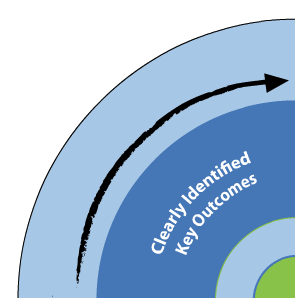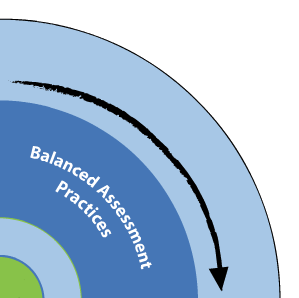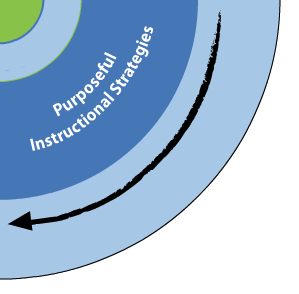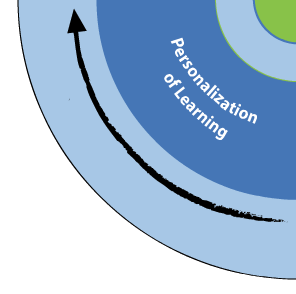PHonological Awareness
Page Navigation
(Click to jump to section)
| Brief Explanation | Research | Characteristics of a Skilled Reader | Clearly Identified Key Outcomes | Balanced Assessment Practices | Purposeful Instructional Strategies | Personalization of Learning |
Brief Explanation
Phonological Awareness is an auditory process and does not involve words in print. It is the ability to hear, identify and manipulate sounds including how they can be separated (pulled apart, segmented, blended and put back together). e.g. Rush ~ /r/, /u/, and /sh/ or Foot ~ /f/, /ÊŠ/, and /t/.
Without phonological awareness, phonics does not make sense. It is a strong predictor of reading success.
Research
- When students have difficulty decoding words it may be because they do not hear the individual sounds that make up spoken words. (Reithaug,2009) Phonemic awareness is the ability to hear, name and manipulate phonemes or sounds in spoken words.
- Before children learn to read, they must understand that language is composed of small sounds. (Adams et al.,1998) .
- For example, understanding by sound (initial, medial and final sounds), word families, syllabication or rhyme.
- Phonemes are the element of language that allows discrimination and make a difference in the meaning of a specific word. It is generally accepted that there are anywhere from 40 to 51 phonemes in spoken speech (Tankersley,2003).
- Phonemes with more than one letter are usually referred to as vowel or consonant blends (e.g. ei, ea) ( e.g. sh, ch).
With
Increasing
Sophistication
Characteristics of a Skilled Reader
- Hear the sounds within spoken words.
- Orally identify the same sound in different words.
- Orally identify initial, final, and medial sounds.
- Orally recognize the word, from a set of spoken words that has the odd sound.
- Orally blend sounds to form words.
- Orally segment words into sounds.
- Orally recognize the word that remains when the initial or final sound is removed.
- Orally recognize that a new word can be made by adding one sound to an existing word.
- Orally recognize that a new word can be made by substituting the initial, final, or middle sound in a word.

Clearly Identified Key Outcomes
Use your programs of study for curriculum outcomes related to phonological awareness.
Please refer to CESD’s Essential Outcomes work if you are using the previous Alberta Curriculum (Grade 7+).
Here is the New Alberta ELAL Curriculum, from the New Learn Alberta website, laid out like a scope and sequence.

Balanced Assessment Practices
- Assessment of phonological awareness is best conducted in small groups and after phonological awareness is taught. It is recommended that assessment occur in groups of two or three (Adams, 1998).
- Some examples of informal assessments that teachers can use in their classrooms include:
- Can the student orally change the initial, medial, final sounds in words?
- Can the student identify the number of syllables, and hear the separate syllables, in a word?
- Can the student segment words into sounds (cat – c-a-t)?
- Can the student blend sounds into words (c-a-t – cat)?
- Can the student produce or identify by sound rhymes or rhyming words?
- Assessments:
- Rhyming
- EICS Phonological Awareness Assessment Tool includes:
letter name & sound identification, onset fluency, isolating initial/medial/final sounds, segmenting words, substituting/deleting phonemes, word recognition, and nonword decoding.
*please contact you admin to access this tool

Purposeful Instructional Strategies
PRE
- Instruction in phonological awareness involves helping children examine and manipulate phonemes in spoken syllables and words. It is essential that students are able to recognize that words are made up of specific sounds, and that these sounds can be changed to make other words.
- Ensure students understand:
- Rhyme
- Initial, Medial and Final Sounds
- How to listen to sounds
- Syllabication – or the rhythm of words such as spaghetti vs. dog
- Blend – that words are made of separate sounds, which when blended together, make a whole word
- Letters of the alphabet by name from its sound
DURING
- Rhyme – ensure the words that rhyme are from same word families to avoid confusion.
- Model sounding out words while pointing to letters that have been spaced apart (blending).
- Using a pocket chart, or a circle graphic organizer, have students sort word cards into groups of rhyming words.
- Same sounds – say three words that have the same beginning sound eg. Dog, dip, doe – ask what sound is the same.
- Say a word, (e.g. rat). Ask students what is the first, middle or last sound. Can they think of words that rhyme? What does the word become if the “r” changes to an “h”? What happens when that word has an “m” on the end? You will want to print this out, modeling the sound changes.
- Segmentation – have students clap syllables while saying words (e.g. Spa-ghe-tti) or segment their name on their arm – lower arm being first syllable, mid arm – mid syllable, and so on.
- Say words, “Cat, Car and Rat”. Repeat these words, but have students clap on the word that doesn’t rhyme.
- Have students write the word “tip” then change it to “ lip” and then list other words with the same word endings (groups of rhyming words).
- Sound (Elkonin) Boxes – Provide students with three tiles or unifix cubes to make words with letter/ sound relationships. Ensure letters are segmented properly before blending together (word families are a great start). As you teach, have the students spell the words with the cubes. For example, c / a/ t would be “spelled” with three different colored cubes. (Note* – This should only be taught when you are certain students understand how to listen, rhyme, and know that words are made of letters and that sentences are made of words).
- Once the above are understood, then students can start spelling predictable words (three letter, short vowel, word families are recommended).
- Read a lot of books with rhythm and rhyme (e.g. Dr. Seuss, poems, chants and songs).
- Use picture cards or sets of objects for initial and final sound isolation (e.g. find all the objects that start with a /s/ sound).
- Model segmenting words into syllables by holding your hand below your chin to feel each syllable as you say the words.
POST
- Frequent assessment of individual students identifying letters by sound in terms of segmenting, deleting, substituting or blending.
- The teacher is to monitor how students are listening to separate sounds in words by having students blend predictable three letter words.
- Consider building on the ideas suggested in the “during” section to embed understanding.
- Play rhyming games with children using predictable groups of rhyming words, chant the words.
- Reread Dr. Seuss books until the child can correctly predict the rhyming word.
RESOURCES TO SUPPORT OVERALL DEVELOPMENT
- Wide range of reading materials that support rhyme
- Adams, M et al. (1998). Phonemic Awareness in Young Children. Toronto: Irwin Publishing
- Yopp, H. K., & Yopp, R.H. (1997). Oo-pples and Boo-noo-noos: Songs and Activities for Phonemic Awareness. Harcourt Brace
- Reithaug, D. (2009) Three Tiers of Instruction and Intervention for Reading. West Vancouver, BC: Stirling Head Enterprises Inc., p. 211-231
- Heggerty Program
- UFLI






Personalization of Learning
- As soon as it is identified that a student is struggling with identifying sounds, intervention is required. This gap is often easily identifiable during the Kindergarten year, and intervention at that point can be very effective.
- Instructional strategies should be chosen to match the learning needs of each student.
- Contact your learning support team for support with students who have more specialized needs, gaps in their learning, or are requiring more challenge